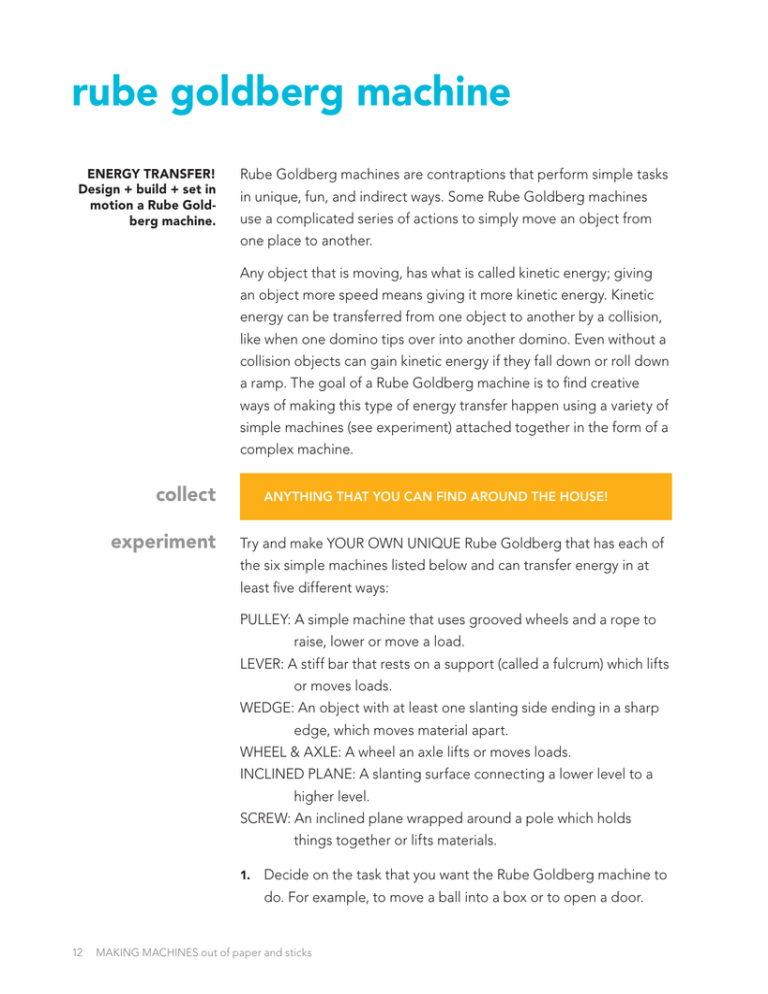rube goldberg machine
advertisement

rube goldberg machine ENERGY TRANSFER! Design + build + set in motion a Rube Goldberg machine. Rube Goldberg machines are contraptions that perform simple tasks in unique, fun, and indirect ways. Some Rube Goldberg machines use a complicated series of actions to simply move an object from one place to another. Any object that is moving, has what is called kinetic energy; giving an object more speed means giving it more kinetic energy. Kinetic energy can be transferred from one object to another by a collision, like when one domino tips over into another domino. Even without a collision objects can gain kinetic energy if they fall down or roll down a ramp. The goal of a Rube Goldberg machine is to find creative ways of making this type of energy transfer happen using a variety of simple machines (see experiment) attached together in the form of a complex machine. collect experiment ANYTHING THAT YOU CAN FIND AROUND THE HOUSE! Try and make YOUR OWN UNIQUE Rube Goldberg that has each of the six simple machines listed below and can transfer energy in at least five different ways: PULLEY: A simple machine that uses grooved wheels and a rope to raise, lower or move a load. LEVER: A stiff bar that rests on a support (called a fulcrum) which lifts or moves loads. WEDGE: An object with at least one slanting side ending in a sharp edge, which moves material apart. WHEEL & AXLE: A wheel an axle lifts or moves loads. INCLINED PLANE: A slanting surface connecting a lower level to a higher level. SCREW: An inclined plane wrapped around a pole which holds things together or lifts materials. 1. Decide on the task that you want the Rube Goldberg machine to do. For example, to move a ball into a box or to open a door. 12 MAKING MACHINES out of paper and sticks 2. Think of ways you can make your materials interact with each other. How can one energy transfer start a chain of actions? Test each energy transfer before putting the entire contraption together. Make sure you think about five different energy transfers that you will implement. 3. Once all the testing is done, put your Rube Goldberg together and watch it perform the task you chose to do in a very complicated, but fun way. If the Rube Goldberg stops midway, retest and redesign that failed energy transfer. How many different energy transfers did your Rube Goldberg reflect have? What are some energy transfers that you observe in your room, outside your window, in the playground? How can you modify your Rube Goldberg machine to use wind to transfer energy? How about water? How about solar energy? 13

